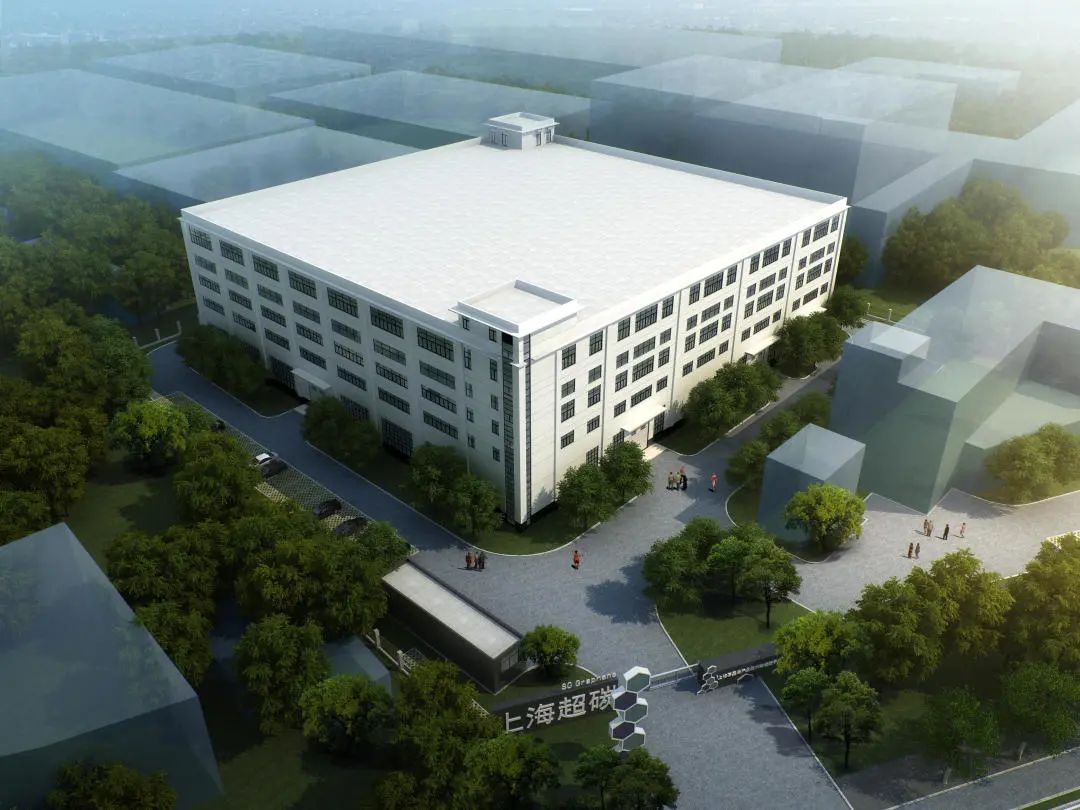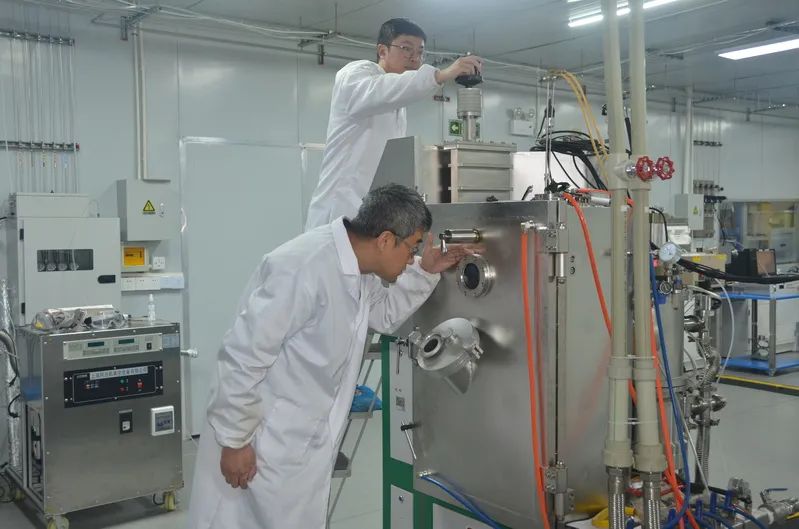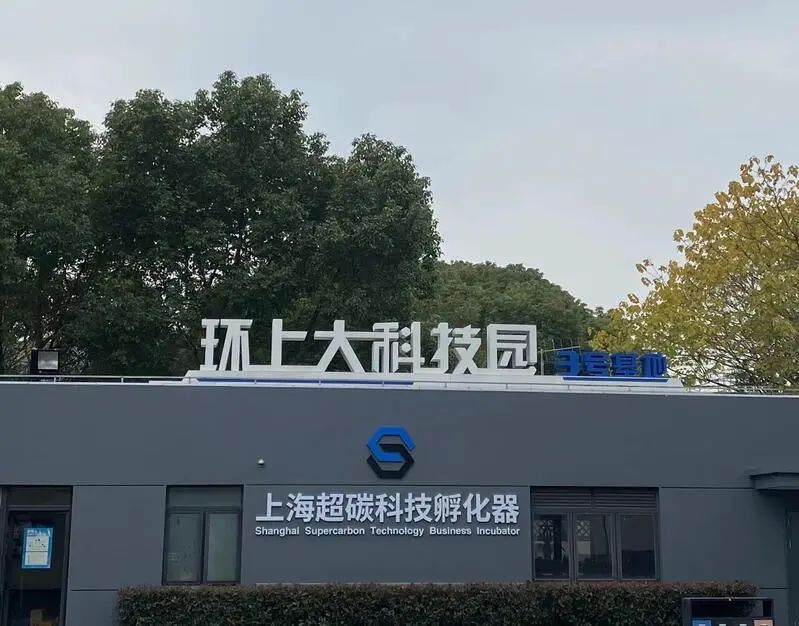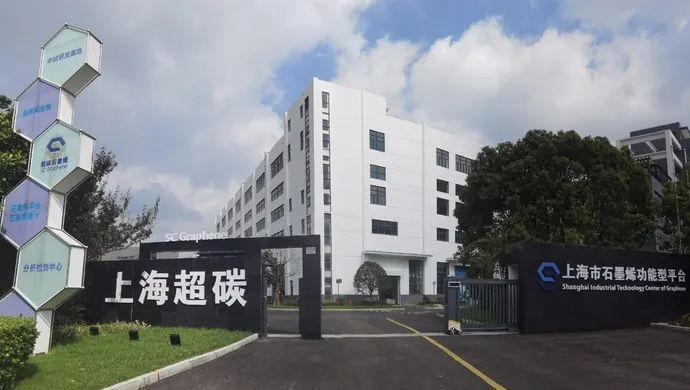This Platform Facilitates a CAS Team to Increase a State-owned Capital Investment by Thirty Times
Not long ago, the number of enterprises in Shanghai Supercarbon Technology Business Incubator (hereinafter referred to as “the Incubator”) reached 100. Some departments of this state-owned incubator had to move and give office spaces to the incubated companies. “We worked in the spacious office on this floor. Now it’s rented by Qingtian.” Liang Yong, a responsible person at Shanghai Industrial Technology Center of Graphene (hereinafter referred to as “the Center”) and the Incubator, told the reporter, “Qingtian is now valued at 103 million yuan and is negotiating with a gas company for the second round of financing. They deserve a better office.”
Shanghai Qingtian New Materials Technology Co., Ltd. was founded by Yu Qingkai, a researcher at Shanghai Institute of Microsystem and Information Technology (SIMIT) of Chinese Academy of Sciences (CAS). Before the company was established, the Center invested 300,000 yuan, which accounts for 10% of the shares. The value of that investment has soared by 30 times and it is expected to skyrocket by 80 times after the second round of financing. Qingtian is not alone. The Center, adopting the method of “professional incubation + state-owned capital investment”, has cultivated several technology companies that are worth over 100 million yuan and originated in higher education institutions or research institutes, including Shanghai Metal-Graphene Composites Engineering & Technology Center Co., Ltd. and Shanghai Shaonao Sensor Technology Co., Ltd.
How do the Incubator and state-owned capital investment companies support hard & core technology projects and participate in the entire process of innovation? The case of the Center’s nurturing of Qingtian will give us some inspiration.

The Center offers pilot-scale test services featuring the “CTO + CEO model”
Qingtian’s path toward innovation began with basic research five years ago. When Yu Qingkai was cracking natural gas with liquid metal catalysts in a lab to prepare graphene powder by bubbling CVD (chemical vapor deposition), he discovered that the purity of the by-product hydrogen was high. Therefore, he started to investigate the feasibility of producing hydrogen and graphene simultaneously from natural gas (whose main component is natural gas).
“This technology roadmap can help China realize its ‘dual carbon’ goals.” Yu Qingkai said, “Traditional energy accounts for a high proportion of China’s energy structure. To achieve carbon peaking and carbon neutrality, we must promote the clean use of natural gas and other traditional energy.” The good news is that no greenhouse gases such as carbon dioxide will be emitted during the production of hydrogen and graphene from natural gas and the production is short and uses less chemical raw materials.
After realizing the application prospect of the sci-tech achievement he made in the laboratory, Yu Qingkai embarked on the journey of transforming the achievement. SIMIT of CAS has signed a contract with the Center to advance the commercialization of new materials projects. As one of the first municipal-level R&D and transformation functional platforms in Shanghai, the Center builds pilot-scale test production lines for new materials projects from higher education institutions or research institutes to fill the gaps between the laboratories of higher education institutions or research institutes and large-scale production.

Yu Qingkai (front) and his colleague are working in the laboratory for pilot-scale test verification
From 2019 to 2021, Yu Qingkai’s team carried out pilot-scale tests in the Center. The Center invested nearly 10 million yuan to construct a pilot-scale test verification laboratory for preparing powder materials by bubbling CVD and employed a project manager for the research team to take charge of the construction of the laboratory, production safety, procurement of raw materials and other service guarantees. Liang Yong names it the “CTO + CEO model”, where a scientist works as the CTO (Chief Technology Officer) of a pilot-scale test project and a project manager serves as the CEO (Chief Executive Officer) of a pilot-scale test project. The model aims to enable scientists to focus more deeply on resolving technological problems.
After getting inside the laboratory for pilot-scale test verification, the reporter found that it looks more like a production workshop. The 1,000-square-meter site and three sets of large liquid metal reactor equipment have verified the feasibility of large-scale hydrogen production from natural gas cracking.
The value of the state-owned capital investment in a hard & core technology project soars by 30 times
In Yu Qingkai’s opinion, there is a mutual feedback relationship between basic research and pilot-scale test verification. In pilot-scale tests, Yu Qingkai and his colleagues identified some problems that need to be further studied in the field of basic research and handed them over to the basic research team. After the team solved the problems, Yu Qingkai and his colleagues applied the basic research results to pilot-scale tests to verify whether they can improve production. Through repeated mutual feedback, Yu Qingkai and his colleagues completed the pilot-scale test verification and mastered the core technologies in formulas of liquid metal catalysts, matching of reactor materials, distribution of gas in liquid metal and other links.
The results of pilot-scale tests indicate that the efficiency of hydrogen production from natural gas cracking reaches 99%, the power consumption is only one-fifth of that of hydrogen production from water electrolysis, the produced graphene powder has excellent conductivity, and the production cost is just one-fifth of that of traditional graphene preparation methods.
In April 2021, Qingtian was incorporated in the Incubator. The company was funded by Yu Qingkai’s team, the Center and SIMIC Holdings Co., Ltd. The two SOEs, each holding 10% of the shares, are well informed about the project of producing hydrogen and graphene from natural gas: The Center is the investor and the service provider of pilot-scale tests, and SIMIC Holdings Co., Ltd. is an investment company created by SIMIT of CAS and Shanghai Alliance Investment Company. As the major shareholder of the Center, Baoshan High-tech Industrial Park also rendered tremendous support to Qingtian and other enterprises in the Center, provided funds and introduced policies on professionals.

Shanghai Supercarbon Technology Business Incubator is situated in the Circum-SHU Science Park
In 2022, Qingtian completed the first round of financing of 23 million yuan with excellent results of pilot-scale tests, raising the value of the early investment of the two SOEs by 30 times. In 2023, Qingtian, a small technology company, will cooperate with a large gas enterprise to secure the second round of financing, further increasing the value of the two SOEs’ equity in the company.
From Yu Qingkai’s viewpoint, this case gives us enlightenment: A state-owned capital investment company should establish an incubator to “accurately invest” in promising hard & core technology projects. By doing so, the investment team from the investment company can observe an incubated enterprise at close range and at all times and get a deeper understanding of the enterprise’s teams’ capabilities and skill level and the market prospects of its projects. “SOEs should not operate an incubator to make profits, but should utilize it as a selection platform for investing in hard & core technology projects in the early stage.”
Liang Yong recommends changing the model of fiscal support platforms
Liang Yong holds that SOEs can take building specialized incubators as their objective. The Incubator is a specialized incubator. Relying on the Center, the Incubator has constructed nine laboratories for pilot-scale test verification of new materials to offer pilot-scale test and R&D services, material analysis and testing services and battery testing and evaluation services for the incubated enterprises.
The Center has gathered over 40 top-rated Chinese and foreign materials experts through project cooperation and employment, including three Chinese academicians and four foreign academicians. Moreover, it has reached close cooperation with 13 leading sci-tech teams, including Yu Qingkai’s team. Entrepreneurs from the companies in the Incubator can communicate with these experts and enlist support from foreign professionals.
With specialized equipment and teams of sci-tech professionals, incubators can form unique characteristics to exert greater attraction for hard & core technology start-ups. In this respect, the Incubator has made fine achievements: Last year, it created a total output value of about 180 million yuan and total tax revenue of about 4.8 million yuan; the incubated enterprises won financing of over 100 million yuan. This year, many companies are negotiating with investment firms to obtain financial support. The method of “professional incubation + state-owned capital investment” has boosted the valuation of investment equity of the Center and realized hidden profits.

Shanghai Industrial Technology Center of Graphene
The success of the Incubator is inseparable from the great contribution of the R&D and transformation functional platforms co-built by the Shanghai Municipal People’s Government and the governments of districts in Shanghai. Functional platforms are a new type of scientific research institutes, which operate like enterprises, focus on offering services for R&D and transformation of industry-common technologies and cultivating and incubating innovative enterprises and strive to create industry innovation ecosystems. It is by relying on the Center that the Incubator gained specialized equipment and teams of sci-tech professionals.
Currently, the first functional platforms in Shanghai have entered the evaluation stage. The second round of the support cycle will be started for the functional platforms assessed as Class A functional platforms. Liang Yong suggested that the governments could explore shifting from the fiscal support model to a government-purchased service model during the second round of the support cycle, thereby helping tackle the problem of long-term losses of functional platform enterprises and create conditions for those companies to secure market-based financing. “We’ve realized ‘self-hematopoiesis’ for a functional platform by adopting the ‘professional incubation + state-owned capital investment’ approach and generated hidden profits. If we turn part of the fiscal support into government-purchased services based on the actual use of funds, we’ll reduce losses, facilitate market-based financing and encourage more social capital to take part in the R&D and transformation of industry-common technologies and build Shanghai’s industry innovation ecosystems with the governments and SOEs.”

宝山汇APP

上海宝山微信

上海宝山微博